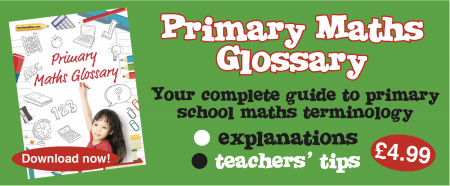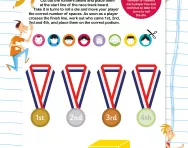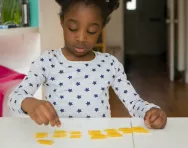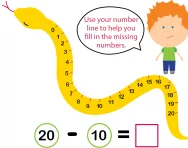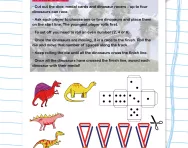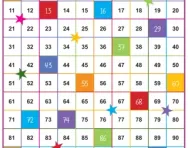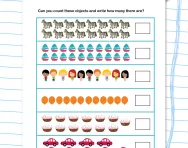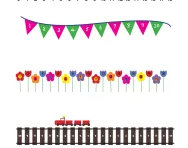Important update from TheSchoolRun
For the past 13 years, TheSchoolRun has been run by a small team of mums working from home, dedicated to providing quality educational resources to primary school parents. Unfortunately, rising supplier costs and falling revenue have made it impossible for us to continue operating, and we’ve had to make the difficult decision to close. The good news: We’ve arranged for another educational provider to take over many of our resources. These will be hosted on a new portal, where the content will be updated and expanded to support your child’s learning.
What this means for subscribers:
- Your subscription is still active, and for now, you can keep using the website as normal — just log in with your usual details to access all our articles and resources*.
- In a few months, all resources will move to the new portal. You’ll continue to have access there until your subscription ends. We’ll send you full details nearer the time.
- As a thank you for your support, we’ll also be sending you 16 primary school eBooks (worth £108.84) to download and keep.
A few changes to be aware of:
- The Learning Journey weekly email has ended, but your child’s plan will still be updated on your dashboard each Monday. Just log in to see the recommended worksheets.
- The 11+ weekly emails have now ended. We sent you all the remaining emails in the series at the end of March — please check your inbox (and spam folder) if you haven’t seen them. You can also follow the full programme here: 11+ Learning Journey.
If you have any questions, please contact us at [email protected]. Thank you for being part of our journey it’s been a privilege to support your family’s learning.
*If you need to reset your password, it will still work as usual. Please check your spam folder if the reset email doesn’t appear in your inbox.
What are cardinal and ordinal numbers?
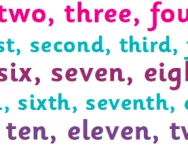
What are cardinal numbers?
Cardinal numbers are used to count a set of objects and tell us about quantity. We use cardinal numbers when we're counting how many buttons are in a jar or how many children are on the playground: one, two, three, four, five, etc.
Cardinal numbers are whole numbers and refer to a set of objects, therefore do not include decimals or negative numbers. They are used to answer questions such as ‘How many pencils are there?’ and relate to concrete or real-life items and objects. Cardinal numbers are sometimes referred to as 'counting numbers' as they are used to count sets of objects.
What are ordinal numbers?
Ordinal numbers tell us an item's position in a list, for example: first, second, third, fourth, etc.
We use ordinal numbers to order and position items and numbers, perhaps to say which position someone came in a race or to recite numbers or place numbers on a number line / time line.
Dates are another example of ordinal numbers as they tell us when something happened. Ordinal numbers are used to label items (for example the pages in a book).
Cardinal and ordinal numbers in primary school
Cardinal numbers and ordinal numbers are both used in everyday life situations. Both concepts are taught alongside each other and usually not explicitly differentiated.
In Reception children will begin using numbers (0-10)
- to count sets of objects (cardinal)
- to recite numbers in order (ordinal)
- to position or order events such as who came first in a race (ordinal).
In Year 1 children will continue to use cardinal and ordinal numbers 0-20.
In Year 2 children will use numbers cardinal and ordinal numbers 0-100.
How cardinal and ordinal numbers are taught in the classroom
In Reception children will begin to learn to count / recite numbers through the use of nursery rhymes (one, two, three, four, five once I caught a fish alive) and games (What’s the time Mr. Wolf?) and using digit cards or visual number lines. They will be taught to count sets of objects through child-led play and teacher focused activities such as counting plastic dinosaurs, counting the number of children in the book corner, counting leaves, etc.
They will learn to use ordinal numbers by positioning numbers in order and completing activities such as ordering large foam numbers, drawing the numbers in order in chalk outside or jumping along a physical number line on the floor as they say the numbers. They may also use computer games to order numbers.
In KS1 children will continue to develop their knowledge of cardinal and ordinal numbers through a range of activities. They will start to use number lines, hundred squares and bead strings to order numbers and recite them.
Teachers' tips and tricks to help with cardinal and ordinal numbers
At home with Reception / Y1 children you can:
- Provide objects to count such as plastic dinosaurs, beads, buttons, etc. (cardinal numbers practice)
- Match sets of objects to digit cards / foam numbers, for example putting three beads by the number 3 (cardinal numbers practice)
- Sing number songs with your child such as Five little ducks, Ten green bottles, Five currant buns, One, two, three four five, once I caught a fish alive (ordinal numbers practice)
- Use vocabulary to order and position events like races (ordinal numbers practice)
- Put numbers in order using digit cards, foam numbers or writing them in chalk (ordinal numbers practice)
